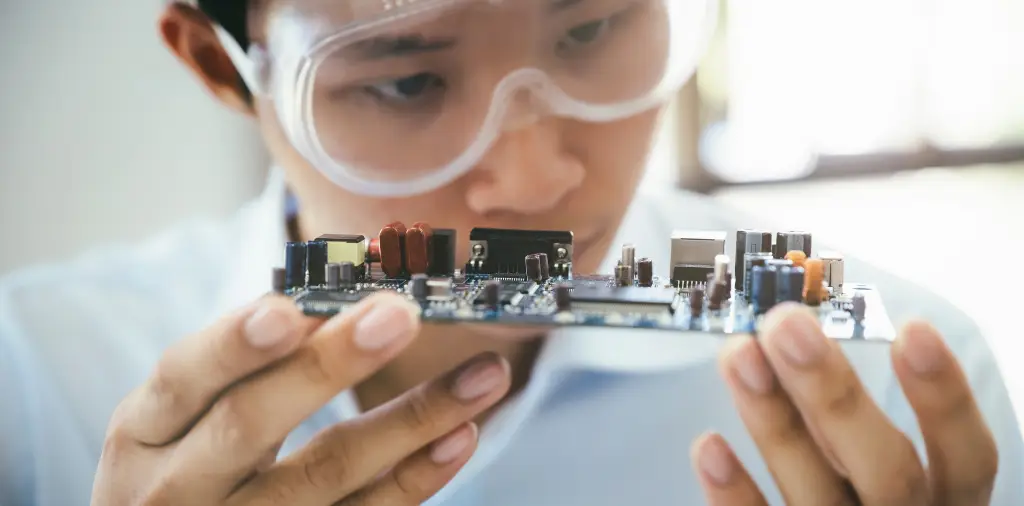Few manufacturing verticals are as innovative as the medical devices sector. From diagnostics equipment and laser scanning devices to drug delivery systems, implants and orthopaedics, healthcare technologies are becoming more advanced, compact and effective than ever before.
However, that innovation isn’t without its challenges. Indeed, as capabilities evolve, the pressure on manufacturers to develop complex components in a precise, fast and consistent manner grows – all while keeping costs down.
In this context, advanced manufacturing methods like injection moulding are rising to the fore. Indeed, the ability to make complex parts for life-saving systems on a large scale has become fundamental to the success of healthcare systems around the world.
Why plastic injection moulding is ideal for medical devices
There are many reasons why plastic injection moulding is ideal for medical devices.
The ability for plastic to be shaped into highly complex, intricate geometries is incredibly useful, allow intricate features to be easily added to key medical devices on repeatable basis.
Once a mould has been made, it can be used to make hundreds of thousands of replicable parts on a repeatable basis, with very little need for major maintenance or repair. The result is a tool that can be used for high-volume production at low per-part costs.
Another major benefit is the varied and useful properties of polymers. Not only are these cost-effective materials with high-performance properties that include durability, flexibility, impact resistance, bacteria resistance, and the ability to withstand high temperatures. Equally, they’re also lightweight compared with alternative materials such as metals, composites, ceramics, or glass.
Today, a wide range of polymers have been medically approved, with a versatile range available for use in different applications. These are easy to process, both initially and retrospectively with additives. An example is the addition of advanced EMC coating materials to act as a shield against electromagnetic and radio frequency interference. In the medical field where scans and X-rays are key for diagnoses, this is vital.
Enabling innovation in medical manufacturing
This mix of ideal properties is helping to drive innovation in the medical device manufacturing industry forward.
Injection moulding is flexible, meaning that iterative designed can be created quickly and easily. Through the use of 3D printing and CNC machining technologies, manufacturers can reduce lead times from 12 to just two weeks, dramatically accelerating product development cycles.
This isn’t limited to any one type of medical plastic component. Injection moulding can be used to produce small, single use components, such as consumable tools for surgeons and dentists, or it can be used to create significantly larger medical devices.
Often, we see medical device injection moulding carried out in cleanrooms – environments in which contamination from dust, bacteria, or other airborne particles is kept to a minimum. It is through this combination that many of the most vital healthcare devices and equipment are created:
- Surgical instruments and implantable devices: including forceps, clamps, orthopaedic implants and stents.
- Diagnostic devices: including housings for monitoring and testing devices and laser scanners.
- Drug delivery systems: including plastic tubing, connectors, syringe parts, casings for autoinjectors and components for nebulisers and inhalers.
- Prosthetics and orthotics: including key components for limb replacements or support braces.
- Wearable medical devices: including housings for wearable devices that monitor heart rate, oxygen and glucose levels or provide relief for conditions such as tinnitus.
Emerging polymers are enhancing medical injection moulding capabilities
The ongoing evolution of medical devices is driven not only by advancements in manufacturing capabilities, but also by continuous innovation in the injection moulding polymers used.
Traditionally, many medical applications have been created using Polyvinyl chloride (PVC), polypropylene (PP), polyethylene (PE), polycarbonate (PC) and polystyrene (PS). However, newer variants have emerged such as copolyester, polybutylene terephthalate PBT and TPX™ (PMP) polymethyl pentene. We talk more about these in this blog.
Today, however, the two most advanced medical grade thermoplastics suitable for injection moulding are Polyphenylsulfone (PPSU) and Polyetheretherketone (PEEK).
- PPSU has exceptionally high temperature resistance (up to 220°C for short term exposure or 180°C for long periods) and resistance to aggressive chemicals, making it particularly well suited to tough medical sterilisation processes, such as gamma and steam.
- PEEK also has exceptionally high temperature resistance of 260°C, providing greater reliability and increased safety margins in harsh environments. It equally has exceptional resistance to wear, chemicals, radiation, hydrolysis and thermal degradation, and can deliver electrical performance, mechanical strength and dimensional stability to finished parts.
These high-performance polymers can be used for rapid prototyping and rapid manufacturing using 3D printers to increase speed to market. Further, they can also be combined with other materials to develop medical devices, instruments, components and implants for use in dentistry, orthopaedics and surgical fixation.
Specialists in plastic injection moulding for healthcare companies
For medical device manufacturers looking to continually advanced and evolve their products, working with a specialist injection moulding partner is essential.
At OGM, we’re ready to support you. As specialists in plastic injection moulding for healthcare components, we are proficient in engineering out design issues for our customers while increasing efficiency, quality and consistency in production processes.
As an ISO 13485 certified organisations that operates an ISO 7 / Class 10,000 cleanroom, we’re able to meet the highest standards in medical device injection moulding.
Ready to explore how your production processes could be optimised? Contact us to see how our plastic injection moulding solutions can support you with your medical device innovations today.

